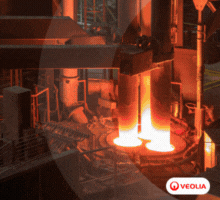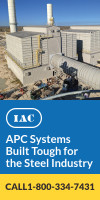NLMK to Lower Energy Intensity of Steel Production
10/27/2009 - Novolipetsk Steel claims it will lower specific steel production energy intensity by 9% to 5.75 Gcal/tonne within three years by increasing in-house energy generation with the full use of secondary fuel gases, among other actions.
Novolipetsk Steel (NLMK) claims it will lower specific steel production energy intensity by 9% to 5.75 Gcal/tonne within three years to reach the best performance of similar EU steel companies.
NLMK says it will decrease specific energy intensity between 2010 and 2012 by increasing in-house energy generation with the full use of secondary fuel gases, the introduction of advanced equipment with low specific energy consumption in BOF and rolling operations, the use of secondary heat from sinter and blast furnace operations, as well as a decrease in the loss of energy resources during their transportation.
In 2005, NLMK commissioned the Energo information and measuring system to improve its energy resources accounting. The system, which is able to automatically form utilities production and consumption balances, was introduced this year at NLMK’s coke operations.
For the last 10 years, specific energy intensity at the company’s main production site in Lipetsk has declined by almost 13%, from 7.2 to 6.3 Gcal/tonne. According to NLMK, this reduction was the result of implementing the Technical Upgrade Program, for which new energy-saving technologies were introduced, lines with low energy consumption were built, and in-house energy generation facilities were expanded. Energy self-sufficiency of the Lipetsk site currently stands at 44%.
Novolipetsk Steel (NLMK) is a world-class steel producer with operations spanning mining, steelmaking, and rolling. Its main production facilities in Lipetsk, in the center of European Russia, are within 350 km of Stoilensky, its main iron ore supplier, and close to key Russian customers and major transport routes. It is among the world’s most profitable steel companies with sales revenue of USD11.7 billion and an EBITDA margin of 39% in 2008. Last year, the company produced 10.5 million tonnes of steel.



.jpg?lang=en-US&ext=.jpg)
-(1).gif?width=220&height=200&mediaprotectionhash=8011a71ede637cd523c67b1296fc49e6151560fde821a46f29cc85998cc76615&ext=.gif)



